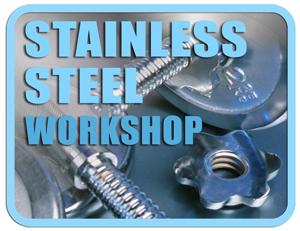- FMA
- The Fabricator
- FABTECH
- Canadian Metalworking
Categories
- Additive Manufacturing
- Aluminum Welding
- Arc Welding
- Assembly and Joining
- Automation and Robotics
- Bending and Forming
- Consumables
- Cutting and Weld Prep
- Electric Vehicles
- En Español
- Finishing
- Hydroforming
- Laser Cutting
- Laser Welding
- Machining
- Manufacturing Software
- Materials Handling
- Metals/Materials
- Oxyfuel Cutting
- Plasma Cutting
- Power Tools
- Punching and Other Holemaking
- Roll Forming
- Safety
- Sawing
- Shearing
- Shop Management
- Testing and Measuring
- Tube and Pipe Fabrication
- Tube and Pipe Production
- Waterjet Cutting
Industry Directory
Webcasts
Podcasts
FAB 40
Advertise
Subscribe
Account Login
Search
Stainless Steel Workshop: Controlling Corrosion
- By Jeff Heagey
- March 20, 2015
- Article
- Metals/Materials
Q: How do I control corrosion in stainless steel?
A: Corrosion in stainless steel is one of the most troublesome technical concerns for fabricators. Whether localized or widespread, corrosion takes many forms, depending on the particular service environment. Some common types are general corrosion, crevice corrosion, intergranular corrosion, pitting corrosion, and stress corrosion, just to mention a few. Regardless of the type, corrosion can become a financial nightmare or, worse yet, result in a catastrophic failure.
Corrosion is defined as an undesirable deterioration of the metal as a result of a chemical or electrochemical reaction caused by the immediate environment. Identifying the source of the corrosion, as well as recognizing the need to prevent it, should be first and foremost.
Control of corrosion in the base metal is the responsibility of the designer. Even with everything done correctly, welds often do not exhibit the same level of corrosion resistance. But if not correct, the corrosion level can be higher. First, choose the correct filler metal. Your welding supplier can advise you on this if the designer has not specified it. For example, the filler metal should meet or exceed the level of molybdenum in the base metal. This could require the use of a nickel-based alloy, especially if the molybdenum content exceeds 4 percent.
Second, the welding procedure must correctly control heat input. This becomes increasingly more critical as the nickel content rises. Excessive heat can cause the formation of undesirable structures and create undue stresses that will only exacerbate corrosion or cause cracking in service. With duplex stainless steels, too much heat or even to little heat can cause undesirable phases to be formed, thus affecting the corrosion resistance.
Be sure to choose the right pre- and postweld cleanup tools for grinding, brushing, and buffing the final weldments. Select stainless steel cleaning tools that have not previously been contaminated from use on carbon or low-alloy steels. Also be sure to remove all traces of slag and welding fume from the base metal. Eliminating any cracks or crevices, such as undercut, is imperative.
Of the many methods to control corrosion, none is better than implementing best practices. Corrosion control is best accomplished by selecting the proper filler metal and following sound fabrication practices. This will ultimately provide maximum corrosion resistance.
About the Author
Jeff Heagey
ESAB Welding & Cutting Products
717-630-3445
About the Publication
Related Companies
subscribe now

The Welder, formerly known as Practical Welding Today, is a showcase of the real people who make the products we use and work with every day. This magazine has served the welding community in North America well for more than 20 years.
start your free subscription- Stay connected from anywhere

Easily access valuable industry resources now with full access to the digital edition of The Fabricator.

Easily access valuable industry resources now with full access to the digital edition of The Welder.

Easily access valuable industry resources now with full access to the digital edition of The Tube and Pipe Journal.
- Podcasting
- Podcast:
- The Fabricator Podcast
- Published:
- 04/16/2024
- Running Time:
- 63:29
In this episode of The Fabricator Podcast, Caleb Chamberlain, co-founder and CEO of OSH Cut, discusses his company’s...
- Trending Articles
Sheffield Forgemasters makes global leap in welding technology

Welding student from Utah to represent the U.S. at WorldSkills 2024

Lincoln Electric announces executive appointments

Engine-driven welding machines include integrated air compressors

ESAB unveils Texas facility renovation

- Industry Events
16th Annual Safety Conference
- April 30 - May 1, 2024
- Elgin,
Pipe and Tube Conference
- May 21 - 22, 2024
- Omaha, NE
World-Class Roll Forming Workshop
- June 5 - 6, 2024
- Louisville, KY
Advanced Laser Application Workshop
- June 25 - 27, 2024
- Novi, MI



























